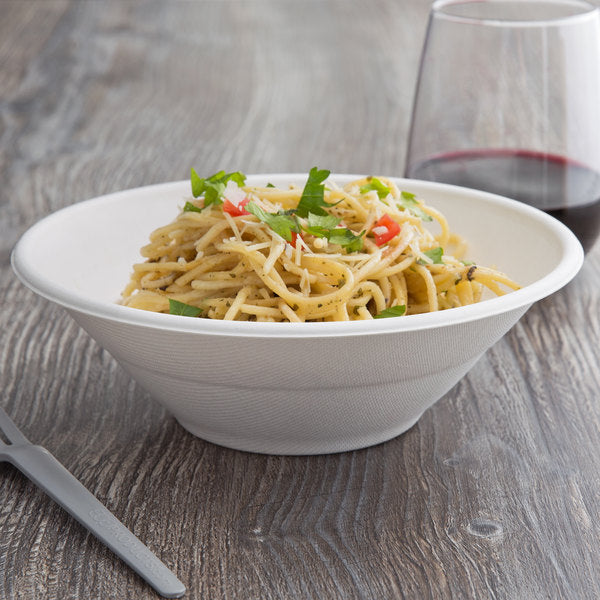Beef is a popular and favorite ingredient in global cuisine. However, not everyone clearly understands the classification of beef and its importance. For housewives and chefs, understanding the levels of beef is an important factor, helping to improve the quality of dishes and bring a great culinary experience. In this article, we will delve into the world of beef grades, exploring what they mean, how beef is graded, and the various grades of beef available in the market.
- What Is Ground Beef? Different Types of Ground Beef
- What Is Lard? What are Benefits of Lard? How To Make Lard & Store Lard
- How to Defrost Meat Safely? How Long Does It Take Meat to Thaw?
- What Are Burnt Ends? How to Make Burnt Ends?
What Do Beef Grades Mean?
Grading for beef quality means evaluation of traits related to tenderness, juiciness, and flavor. Prime, Choice, and Select are the USDA grades of beef that are sold in retail stores. Standard, Commercial, Utility, Cutter, and Canner are the lower grades that are primarily ground or utilized in processed meat products.

Grades of Beef Criteria
Marbling
Marbling is an important factor that affects the flavor and tenderness of beef. Marbling is small lines of fat evenly distributed in the meat fibers, helping the meat to be soft and delicious when cooked. The higher the level of marbling, the sweeter and more tender the meat will be, especially when cooked at high temperatures. This is a top criterion when evaluating the quality of beef.
Color and Brightness
The color and brightness of beef are the most obvious signs to recognize the freshness of the meat. Fresh beef is usually bright red, not too dark and has no signs of discoloration. Natural shine is also an important factor, showing that the meat is not dry or dehydrated. Bright color is one of the important criteria to help consumers choose high-quality beef.
Tenderness
The tenderness of beef directly affects the eating experience. Tender beef is often favored in steaks or BBQs, where texture plays a major role. Tenderness depends on many factors such as the age of the cow, how it is raised, and the cut of meat used. Beef from less active muscles such as tenderloin is often more tender than other muscle cuts.
Origin and Age of the Cow
Origin and age are also important factors that affect the quality of the meat. Cows raised in areas with good climates and farming conditions often produce higher quality meat. The age of the cow also greatly affects tenderness and flavor. Meat from young cows is often more tender and sweet, while meat from older cows has a rich flavor but can be tougher.
What Are the Grades of Beef?
Prime Beef - Highest Grades of Beef
Prime beef is the highest grade of beef and represents the finest quality available. It is characterized by abundant marbling, which contributes to its exceptional tenderness, juiciness, and flavor. Prime beef is usually found in high-end steakhouses and specialty markets, and it is known for its rich, buttery texture.
- Prime Beef Marbling: Abundant, 8-13% Fat
- Prime Beef Source: Young, well-fed cattle (Between ages of 9-30 months)
- Prime Beef Characteristics: Extremely tender, juicy, and flavorful
- How to Cook Prime Beef: Grilled, broiled, roasted, sous vide
- Prime Beef Cuts: Prime rib, wagyu

Choice Beef
Choice beef is the second-highest grade and is more widely available than prime beef. It offers a good balance between quality and affordability. Choice beef exhibits less marbling than prime but still provides excellent flavor, tenderness, and juiciness. Many consumers prefer choice beef for its value and versatility in various cooking methods. Angus beef is the most well-known example of choice-grade quality meat.
- Choice Beef Marbling: Moderate, 4-10% Fat
- Choice Beef Source: Young, well-fed cattle (Between ages of 9-30 months)
- Choice Beef Characteristics: Tender, slightly juicy, quality at a lower price point
- How to Cook Choice Beef: Braised, roasted, simmered
- Choice Beef Cuts: Ribeye, sirloin

Select Beef
Select beef falls below choice in terms of marbling, tenderness, and flavor. It is leaner and has less intramuscular fat, resulting in a somewhat lower level of juiciness and tenderness. Select beef is often a more budget-friendly option, suitable for dishes that benefit from longer cooking times or tenderizing techniques.
This grade of beef is often one of the top options in local grocery stores, favored for its affordability while still bearing the USDA badge of quality.
- Select Beef Marbling: Modest to small, 2-4% Fat
- Select Beef Source: Young, well-fed cattle (Between ages of 9-30 months)
- Select Beef Characteristics: Lean, affordable but meets quality standards of USDA
- How to Cook Select Beef: Smoked, braised, stewed
- Select Beef Cuts: Brisket, chuck, shank

Standard Beef
Standard beef represents a lower grade in terms of meat quality and is often sourced from a more mature cow (aged between 30-42 months). It has minimal marbling and tends to be leaner, resulting in a leaner texture and reduced tenderness. Standard beef is typically used for processed meat products or in applications where tenderness is not the primary concern.
Commercial Beef
Commercial beef is primarily sold in large quantities to food service establishments and institutions. It is often used for ground beef or other processed meat products. Commercial beef may have even less marbling and tenderness compared to standard beef.
Utility, Cutter, and Canner Beef
Utility, cutter, and canner beef are grades generally not available to consumers. These grades represent older cattle with less desirable meat quality characteristics. They are typically used in processed meat products or for other non-retail purposes.
Prime vs Choice vs Select Beef
Here are table comparing the three top grades of beef:
|
Beef Grade |
Marbling |
Price |
Tenderness |
Flavor |
|
Prime |
Abundant |
High |
Excellent |
Rich |
|
Choice |
Moderate |
Moderate |
Very Good |
Excellent |
|
Select |
Very Little |
Affordable |
Good |
Moderate |
How to Choose the Right Beef for Your Dish
Steak
For steaks, Prime or Choice beef is ideal. The tenderness and flavor of these two meats will help the steak reach the perfect doneness, with a crispy outer layer and a soft interior.
BBQ Grilling
When grilling BBQ, Prime and Choice are also top choices, but if your budget is limited, you can choose Select. To keep the moisture and flavor, you should marinate the meat before grilling and pay attention to the grilling time.
Stews and Hot Pots
For stews and hot pots, Select beef is a good choice, because the meat needs a long cooking time, helping the meat fibers to soften. However, you can also choose beef with a lot of tendons and fat to add flavor to the dish.
Professional Chef Tips
Chefs often advise that, in addition to choosing the right type of meat, you should also pay attention to the cooking technique. For steaks, let the meat rest after cooking to retain the juices. When grilling, keep the heat low to avoid burning the outside while the inside is still undercooked.
Beef in Culinary Cultures of Countries
United States
In the United States, the USDA (United States Department of Agriculture) beef grading system is the gold standard for beef quality. The USDA grades beef based on marbling, color, and tenderness, with grades of Prime, Choice, Select, and lower grades.
Japan
Japan is famous for its Wagyu beef, which is graded using a different system, primarily based on marbling. Wagyu beef is tender and flavorful, with a high level of marbling, and is often considered the best beef in the world.
Australia
Australia has its own beef grading system, with grades based on marbling and age. Australian beef is generally high quality and widely exported, with standards similar to those of the USDA.
Europe
Europe also has its own grading standards, often based on the origin, age of the cow and the conditions of its breeding. European beef is famous for its rich flavor, suitable for traditional dishes.
Canadian Beef Grades
By understanding Canadian grades of beef and their criteria, you can make a more informed decision about purchasing beef!
Prime-Grade Beef
Prime grade beef features abundant marbling, its red meat laced with even fat distribution. The presence of this fat means a more tender and juicy cut of beef that should work well in all conditions.
Only 2% of graded beef is given a Prime grade.
AAA-Grade Beef
Unlike Prime beef, AAA-grade beef has only a small amount of visible marbling. The AAA grade is a high-quality category that will provide a juicy and tender cut of beef that is resilient to various cooking methods.
Up to 50% of graded beef reaches AAA quality and status.
AA-Grade Beef
AA-grade beef is a slight step down from AAA-graded beef because it has only a slight amount of marbling,
45% of graded beef falls under the AA heading and AA-Grade beef can still provide an excellent cooking and dining experience.
A-Grade Beef
A-grade beef is the lowest of the four high-quality grades and only constitutes 3% of graded beef in Canada. However, it is still considered adequate enough to be listed as high quality.

Tips When Buying Beef
When buying beef, you should pay attention to the color, brightness and marbling of the meat. You should choose meat that is bright red, has evenly distributed fat and no signs of discoloration. Fresh beef is usually elastic, and does not sink in for too long when pressed.
To ensure quality, you should buy beef from reputable suppliers or large supermarkets. If possible, choose beef with a clear origin and classified according to international standards such as USDA or national standards such as Japan's Wagyu.
Proper storage of beef is also very important. You should keep the meat in the refrigerator if you plan to use it within 2-3 days. Otherwise, freeze the meat to keep it fresh, and remember to defrost it properly before cooking.
Conclusion
Understanding the levels and criteria for classifying beef not only helps you choose the right meat for each dish, but also improves the quality and flavor of beef dishes. With this knowledge, you can be more confident when shopping and preparing beef, bringing delicious and nutritious meals to family and friends.
Related Articles:







